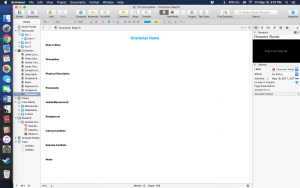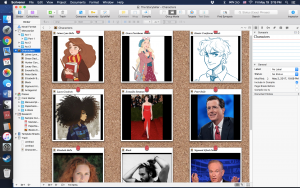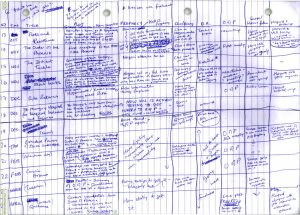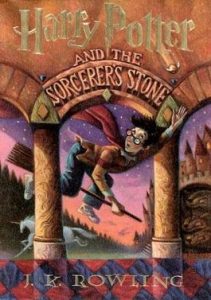Welcome back y’all.
It’s March and you know what that means! That’s right! Time to prepare for Camp WooNoWriMo! What’s that? Well it’s like WooNoWriMo, accept in the spring season instead of fall, and you get to set your own goals. Just want to finish something? Want to write a poem everyday? Want to write 50,000 words? Want to write 25,000 words? Want to just write everyday? Whatever goal you need, you can set it. My goal is to write everyday, like every WooNoWriMo.
So with Camp just a month away, March is a great time to prepare your story or your ideas and get yourself ready for a month of writing. For me that means testing out some ideas and getting my rules down. This will be my fourth Camp, so I have a pretty good idea of what my problem areas are, but maybe this is your first and you have no idea what you’re doing. So here’s a few tips:
- Write down everything. You’re not always going to have time to write when you have a great idea, so keep a notebook or a pen to hand ready just in case.
- Don’t edit. You’re always going to want to go back and edit, but don’t. Going back is the number one way to get stuck fixating on small details. Whatever the change is, just write it down. If you’re not sure if an idea is going to work or you have a big change that will have ripples throughout your story, write it out. Rewrite the scene, don’t skim for old details and try to rework it. Just rewrite the scene entirely. This will keep you writing instead of worrying.
- Try to keep a schedule. This goes for any time of year, but try to keep your writing regular and in a specific place. Don’t try to write around people who distract you or skip your writing entirely. Even if you don’t meet your goal for the day, you need to write everyday to keep yourself going. Not writing one day is like stopping while running a marathon. It’s going to get harder to get going again than it is to keep going slower.
- Stay on the same story. This is my kryptonite. Whenever I do NaNoWriMo I switch back and forth between projects, but you should try to stay on one project. Working on a different project can be equivalent to opening up the browser. You’re doing it because writing is hard and you’re afraid to face the page. But keep going. Work on different sections of the same piece, or rewrite something you didn’t like in a different way. Just keep going.
- Immerse yourself in writing 24/7. During NaNoWriMo I try to switch my media diet to writing channels and writing books. I usually have a playlist of writing YouTubers who I watch to get motivated right before writing. I find it helps ease myself into the headspace I need to be in.





Recent Comments